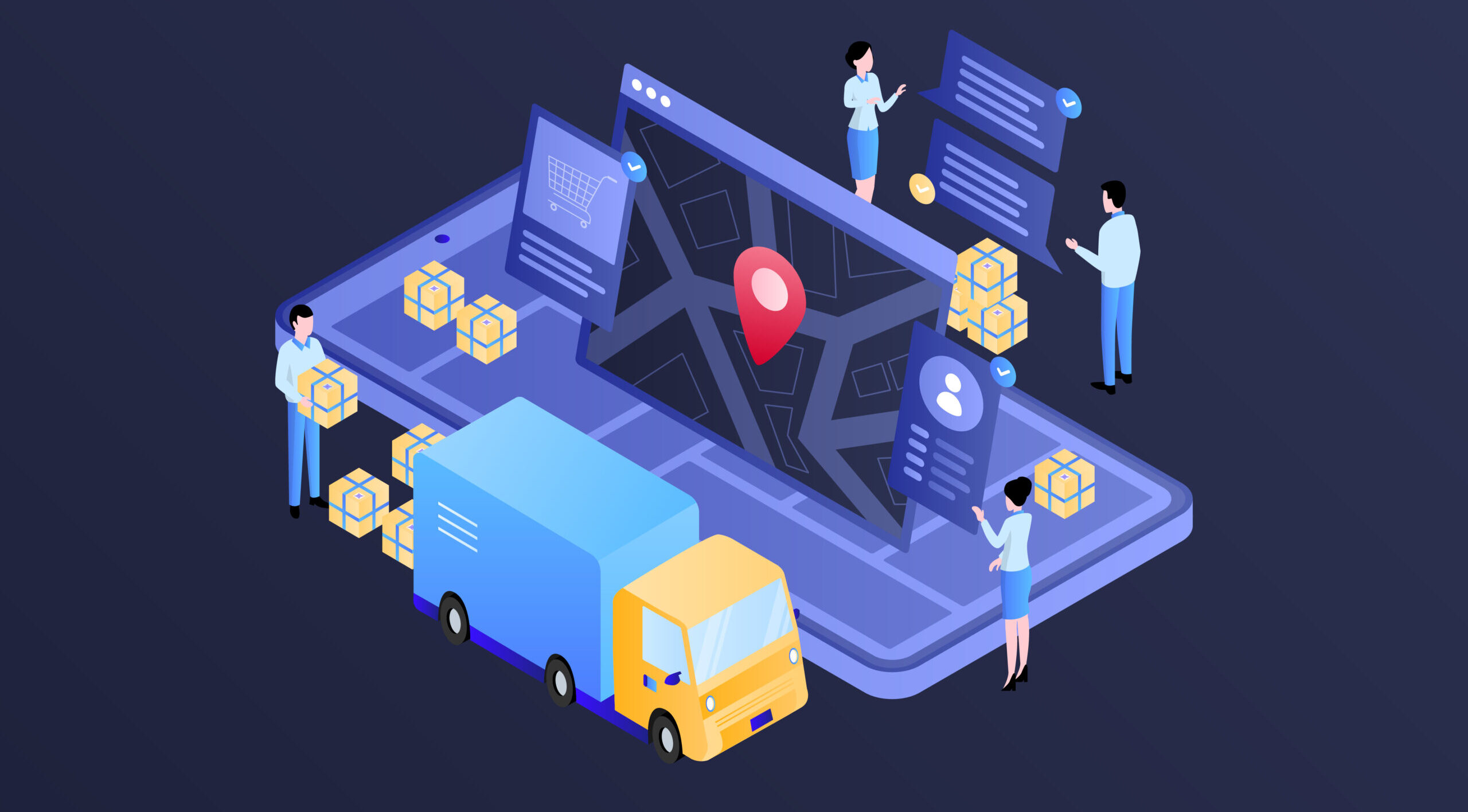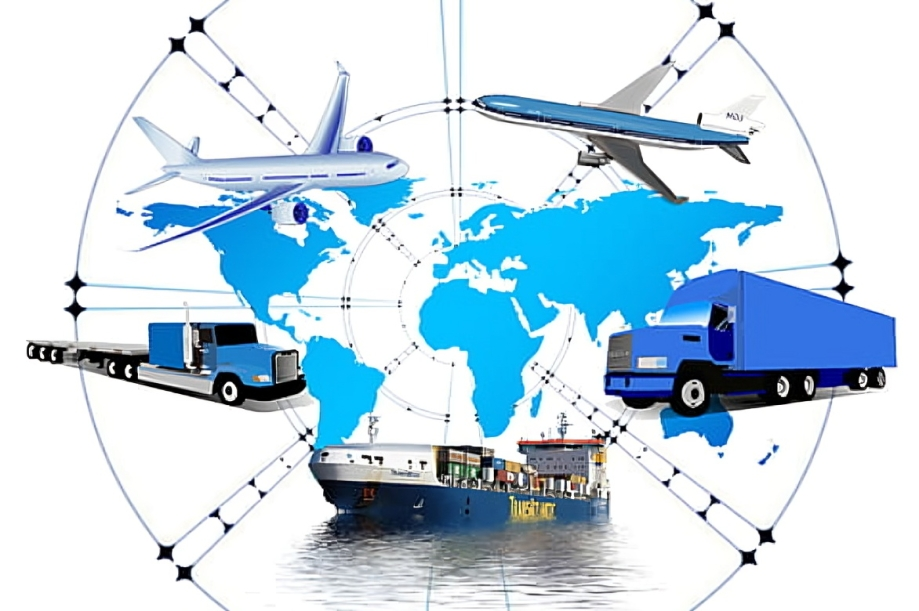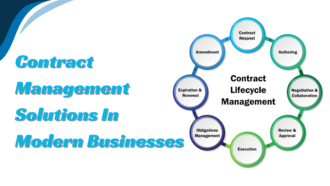Boost Your Shipping and Transportation Business with Logistics Software
- 1 Features of Logistics Software
- 1.1 1. Order Management
- 1.2 2. Warehouse Management
- 1.3 3. Shipment Tracking
- 1.4 4. Route Optimization
- 1.5 5. Reporting and Analytics
- 2 Benefits Of Logistics Software
- 2.1 1. Increased Efficiency
- 2.2 2. Improved Accuracy
- 2.3 3. Cost Savings
- 2.4 4. Enhanced Customer Satisfaction
- 2.5 5. Better Decision Making
- 3 Process of Logistics Software Development
Businesses don’t want to restrict themselves to boundaries in this competitive world. Here, logistics takes place. From startups to big corporate giants, logistics plays a backbone for business. Logistics encompasses the planning, coordinating, and execution of goods and services from business to customers. Effective logistics ensures timely delivery, minimizes costs and enhances customer satisfaction. Thus, we can say that companies take their logistics very seriously, which generates endless opportunities for shipping and transportation businesses.
Running a shipping business can be challenging as you have to manage the logistics of many companies simultaneously. The most essential and challenging task is tracking and recording the supply of goods to different businesses.
Many shipping businesses find managing inventory, route planning, order processing, and customer support challenging. However, with new technological advancements, the solution to this problem has also arrived in logistics software. Logistics software streamlines these tasks by automating inventory tracking, optimizing delivery routes, managing orders, and providing real-time visibility into shipment status. All of this makes the entire process cost- and time-savvy.
In short, the best way to streamline and automate the complex shipping and transportation process is to utilize logistic software. That is why we are here with this article to discuss logistics software. We will understand its features and advantages and discuss the process of building logistics software to address your needs.
Features of Logistics Software
The following are some essential features of logistics software that help your shipping and transportation business streamline and automate different logistics tasks.
- Order Management
- Warehouse Management
- Shipment Tracking
- Route Optimization
- Reporting and Analytics
1. Order Management
Logistics software Simplifies order processing from start to finish, including order entry, fulfilment, invoicing, and returns management, which ensures timely and accurate order processing.
2. Warehouse Management
Logistics software simplifies warehouse management by automating inventory tracking and order processing tasks. It shows where things are stored and helps workers quickly find and ship items. This saves time and reduces mistakes, making the warehouse run smoother.
3. Shipment Tracking
Logistic software provides real-time tracking of shipments that allows customers and internal teams to monitor the status and location of orders throughout the delivery process, which builds customer trust. It also reduces the risk of losing or misplacing the shipmates.
4. Route Optimization
Logistics software can help to plan and optimize delivery routes efficiently to minimize fuel costs and reduce transit times. Thus, it can improve overall fleet efficiency.
5. Reporting and Analytics
Logistic software can Generate comprehensive reports and analytics on critical logistics metrics like delivery performance, inventory turnover, and fleet utilization, which enables data-driven decision-making and helps in continuous improvement.
Benefits Of Logistics Software
After understanding the features of logistics software, you might also get an idea about its benefits, but let’s briefly discuss how logistics software can significantly improve your operations.
- Increased Efficiency
- Improved Accuracy
- Cost Savings
- Enhanced Customer Satisfaction
- Better Decision Making
1. Increased Efficiency
As we have seen in the features of Logistics software, it can streamline operations like route planning, order processing, and inventory management, reducing manual efforts and improving overall efficiency.
2. Improved Accuracy
Logistics software can reduce errors and discrepancies in order processing and inventory management through automation and real-time data synchronization, ensuring accurate and reliable operations.
3. Cost Savings
Logistics software can optimize routes and resources to help reduce fuel costs, minimize idle time, and improve fleet utilization. All of this can result in significant cost savings.
4. Enhanced Customer Satisfaction
Logistics software can facilitate services like real-time tracking and status updates and enables customers to track their shipments and receive timely notifications. All of this leads to improved service levels and customer satisfaction.
5. Better Decision Making
Logistics software can provide actionable insights and analytics on key performance metrics, enabling informed decision-making and continuous improvement in operations and logistics strategies.
The features and benefits of logistics software demonstrate its potential to streamline logistics processes for your shipping and transportation business. It can still be a game-changer even if you handle your logistics in-house. However, every company has different requirements; you need logistic software different from others to meet your requirements. You must follow a step-by-step process for building logistic software to address and fulfil your business needs.
Process of Logistics Software Development
Businesses should follow a step-by-step process for Logistics software development to avoid mistakes and get logistics software that can make your logistics work easy and effective.
1. Access Your Business Needs
You are identifying your specific needs and requirements because every business might face challenges or have other needs. You must determine your shipping company’s challenges and requirements, such as route optimization, inventory management, and order tracking. You can interview key stakeholders like warehouse managers, logistics coordinators, and customer service representatives to gather insights into your shipping operations’ pain points and inefficiencies.
2. Explore Software Solutions, a
Because of rapid technical developments and increasing demand for software development, many options are available for software solutions. Every software solution option has its benefits and challenges. It’s up to you to choose the best one that can align with your requirements. No doubt it’s a big decision and confusing, too. That’s why connecting multiple software consulting companies is advisable to understand which software solution will be best for you. It would be best to consider factors like budget, timeline, scalability, and the level of customization required before choosing software solutions.
3. Select the Right Developers
It’s very important to hire software developers with relevant skills is very important to meet your requirements. It’s advisable to Choose a reputable software development team with expertise in logistics software development. It would be best to look at different skills like Collaboration and Communication, Expertise in Logistics software development, and Technical Proficiency before selecting software developers for your logistics software development.
4. Define Requirements Clearly
The task is not over by hiring software engineers; the most crucial step is to begin from here. You need to explain everything you have in mind about your logistics software to your software developers. It will help you to avoid confusion and keep you and your developers on the same page. You should clearly define your expectations from software, the features you need from software, your budget, and your timeline to your developers.
5. Develop Logistic Software
With the expertise of software developers, Build the software according to the planned design by using appropriate programming languages and technologies that can perform well in your business. Ensure your developers follow all the precise criteria to build your logistic software.
6. Testing and Quality Assurance
Testing and quality assurance play a crucial role in ensuring that the software meets the company’s requirements related to functions reliably and, most importantly, checks whether or not it delivers a positive user experience. This phase involves systematic software testing to identify defects, errors, and inconsistencies; after identifying any problems, it is crucial to consider the steps to follow for quality assurance and address them. In short, the goal of testing and quality assurance is used to identify whether the software meets quality standards.
7. Training and Implementation
Training and implementation means teaching employees how to use and implement the new software smoothly. This involves showing employees and customers how the software works and providing ongoing help if they have questions. It also includes planning how to introduce the software to everyone and gathering feedback to ensure it works well for every customer.
This is how Logistics Software can streamline your shipping business’s entire transportation and logistics process. From its features and benefits, we can say that it has endless potential to improve the logistics operation of your business. As new technology is coming and improving every sector, we can confidently say that new trends like AI, IoT, Blockchain, RPA, and many others will improve logistics software functions. So, it’s the best time to follow the logistics software development process and build logistics software that can be a one-stop solution for your logistics requirements.


















